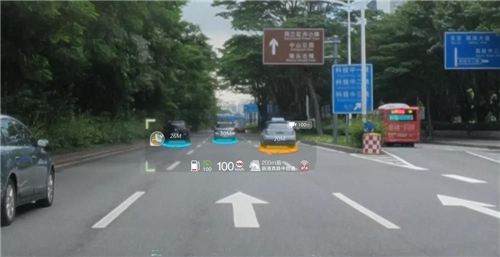(The following content comes from the public account--Shenzhen Auto World)
At this year's Baidu 2018 World Conference, Li Zhenyu, general manager of Baidu's intelligent driving business group, released AR-HUD in the main forum of the conference, once again bringing AR HUD, a not very new technology, to the public eye. As a product that can cooperate with unmanned vehicles, AR-HUD satisfies people's imagination of future windshield entertainment applications. Of course, there is still a long way to go before AR HUD is truly implemented.
The world's major auto parts manufacturers are also increasing AR-HUD technology investment and commercialization of products. In the past, Continental, Harman, LG, Panasonic, Visteon, etc. have demonstrated their products on this technology.
Hefei Jiangcheng Technology Co., Ltd., as a partner of Baidu World Congress AR HUD, showed the public the good strength of domestic manufacturers in this field.
Because the Augmented Reality Head-Up Display (AR-HUD) accurately combines the image information with the actual traffic conditions through the specially designed optical system inside, it expands and enhances the driver's perception of the actual driving environment. Compared with the common C and W type HUD, it has the advantages of clear display, strong sense of technology, and high integration with the car.
The virtual image distance of Jiangcheng's AR HUD in the test can reach 8 meters. The actual feeling is that it fits into a lane 20 meters away, and the 3 lanes at a distance of 60 meters are all within the coverage of the HUD.

Jiangcheng AR HUD renderings
With the explosion of demand, how to judge an AR HUD product depends on the following three important parameters:
1. Field of view (FOV) and virtual imaging distance
The field of view is probably the most important aspect of any HUD solution, especially for AR HUDs, as it directly affects the size of the image the driver sees.
The virtual image distance refers to the projection distance of the image and the distance the image floats in front of the driver. This is especially important when driving at high speeds, where more attention is paid to road hazards.
2. Image quality
Image quality does not necessarily equate to higher resolution. Image quality involves multiple variables, including image refresh rate, color depth, brightness, and more.
Variations in light levels during the day and night mean that any AR HUD solution must be able to maintain deep, accurate colors and consistently high contrast ratios to suit different driving conditions. However, the projection distance is long, and AR HUD manufacturers need to focus on how to control the distortion of the picture and keep the visual range of the picture without ghosting.
3. Integration
Most AR HUD solutions require developers to collaborate on solutions that meet their product and customer needs. HUD solutions are often part of an ADAS integrated solution, with many components designed to work together to provide an improved driving experience.
In addition, AR-HUD interfaces provide a whole new driving experience due to the increase of displayed information space, but there is currently no industry standard for safe and effective user interface design in space. Most are for user interface design and evaluation with an understanding of traditional HMI systems and/or in-vehicle information systems (IVIS).
This also includes the quantitative indicators of the impact of AR-HUD interface design on visual attention, the impact on driving safety, interface design and evaluation schemes, and how to focus and distract attention, etc.
According to the current model plans of major parts manufacturers and OEMs around the world, the full windshield HUD equipped with primary AR technology will enter the first year of real front-loading mass production from 2019 to 2020. At the same time, the models will also be spread from the original luxury high-end models to the economical market.